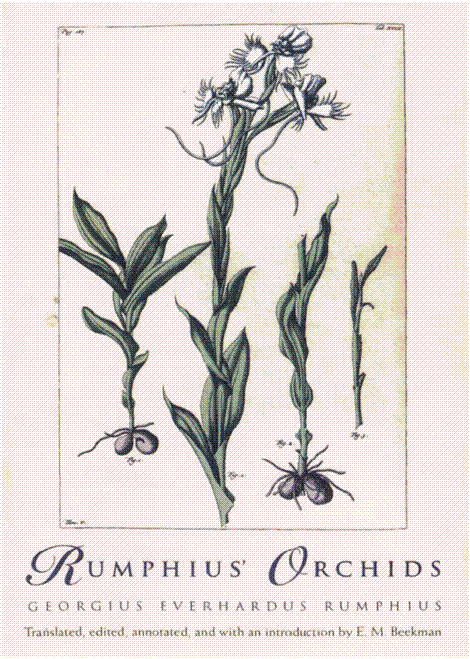great scholarly productivity. In Amboyna he did the botanical field work that underpinned his descriptions of the natural world of South East Asia, which became known in Europe through his extensive scholarly correspondence. In 1681 he was elected a member of the Academia Curiosorum Naturae in Vienna, as the ‘Pliny of the Indies’.
Rumphius' enduring fame rests on two books. His first great work, The Ambonese Curiosity Cabinet, was published posthumously in Dutch in Amsterdam in 1705. It contained a description of the shells, corals, minerals and precious stones of the Moluccas - objects which held a great fascination for his contemporaries, as one can see today in the curiosity cabinet in Rembrandt's House in Amsterdam. Rumphius' second magnum opus was the Ambonese Herbal, published between 1741 and 1750 in a seven-volume edition in Latin by Joannes Burmannus, director of the hortus botanicus in Amsterdam. Modelled on Pliny's classic, it is a natural history of Eastern Indonesia, a treasure chest full of herbal knowledge and indigenous remedies which is of great value both to botanists and ethnographers.
In 1999 Professor E.M. Beekman published a monumental scholarly edition in English of Rumphius' Ambonese Curiosity Cabinet. In 1981 he had already published The Poison Tree, a selection of writings on the natural history of the Indies from both of Rumphius' books. Continuing this labour of love, Beekman is currently working on an English edition of the Ambonese Herbal, and as a first instalment he has now published Rumphius' Orchids.
This little book contains all 48 of Rumphius' descriptions of South East Asian orchid species, and is illustrated with twenty fine drawings. For each orchid, Rumphius gives us a description and classification of the plant, plus its name in Latin, in Malay, in other languages of the region such as Javanese, Balinese and Madurese and in European languages such as Portuguese, Italian and Dutch. Wherever possible he systematically compared his own observations and information on these orchids, from the Moluccas and Java to China, with descriptions of similar plants in India and Latin America provided by his fellow botanists in Europe. This is followed by information on the plant's location, and by details about its uses, both medical and economic. Here Rumphius gives a wide variety of local lore and indigenous stories, as well as his notes on the symbolism of flowers in Indonesian culture.
For each of the beautiful flowers included here Rumphius was the first European to give an expert botanical description. He was also the first to describe in detail what epiphytes are, what orchid seed is, how orchids propagate, and how some species exist in symbiosis with ants. In this respect, Beekman's book offers an important correction to the historical record of South East Asian orchid studies, where Rumphius is often ignored. By happy coincidence,

as Beekman mentions, the double white orchid (
Phalaenopsis amabilis), first described by Rumphius as the
Vliegende Duive (Flying Dove), is today the national flower of the Indonesian Republic.
One of the great attractions of Rumphius' Orchids is the inclusion, wherever possible, of local lore. This has created text layers of considerable complexity, and Beekman is particularly good at resolving the many linguistic and etymological puzzles it has